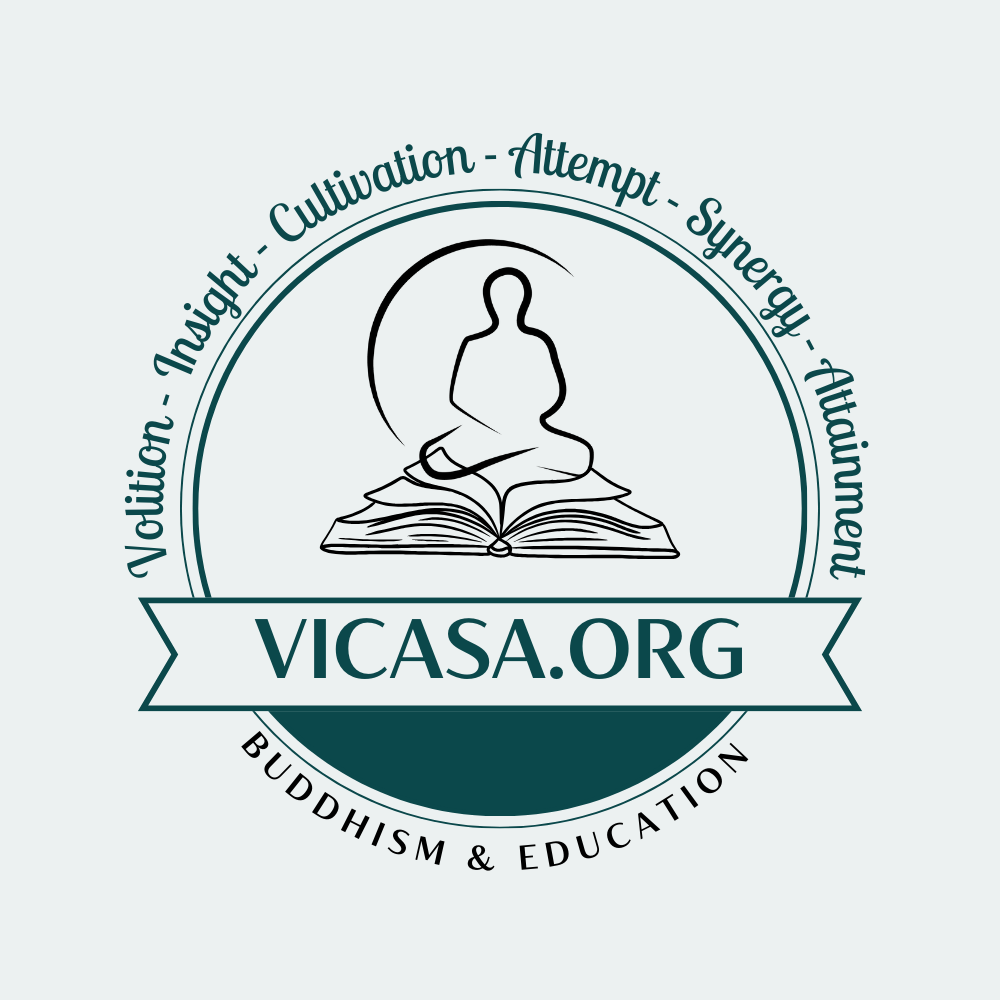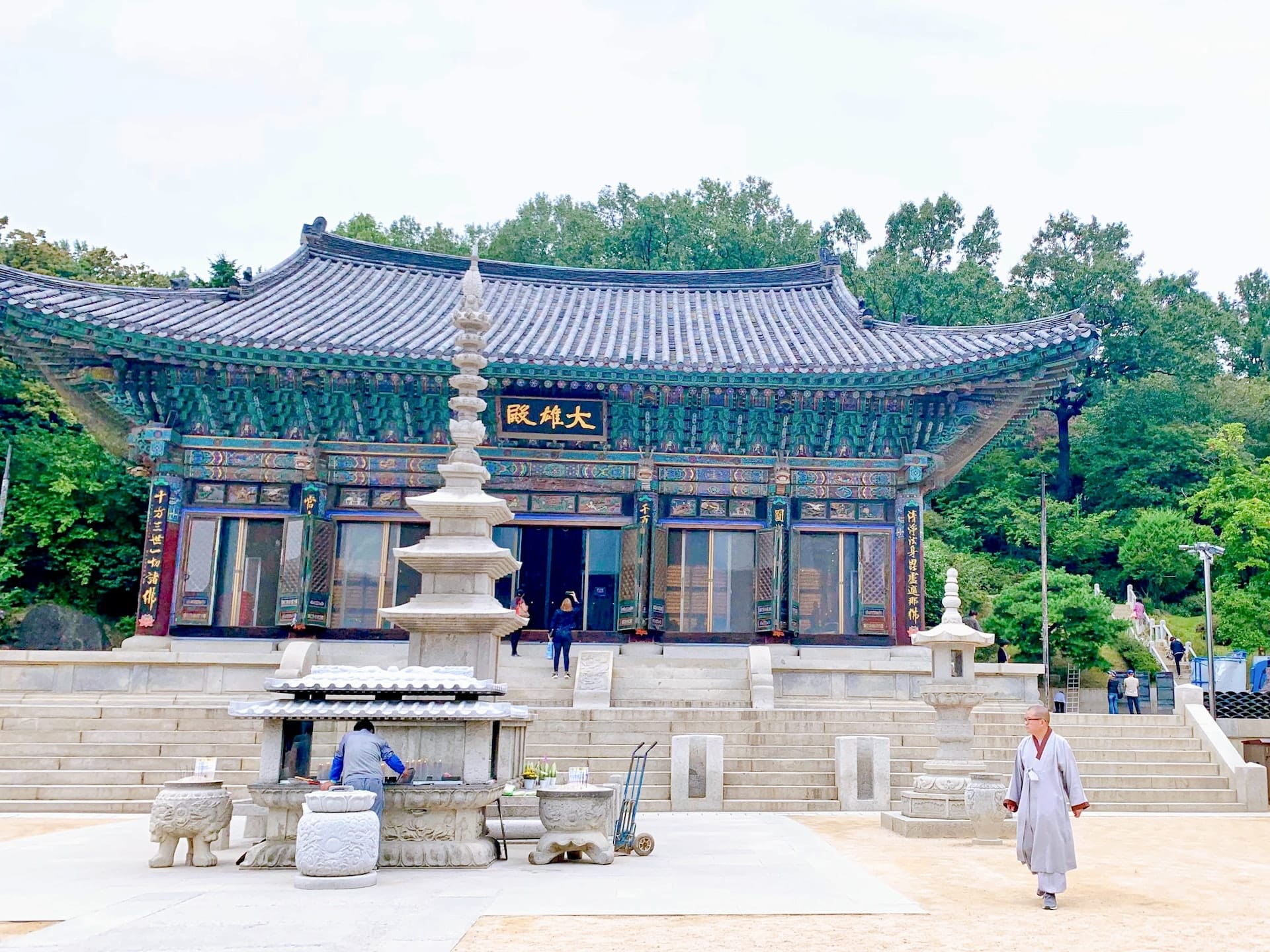Pa Auk Tawya Forest Monastery
Pa Auk Tawya (Forest Monastery) is situated near the Pa Auk Village. The main road from which to enter the forest is at the 9th Mile Mawlamyine-Mudon Highway. The name ‘Pa Auk Tawya’ is also used by other forest monasteries in the area where their alms-round resort is also the Pa Auk Village.
However in the following, ‘Pa Auk Tawya’ refers only to the Forest Monastery consisting of three monasteries that come under the guidance of the Venerable Sayadaw Bhaddanta Acinna which are:
(1) Thit-thee Kyaung or (also known as) Zin-gyan Kyaung or Lower Monastery; (2) Kywe-da-nyin Kyaung or Middle Monastery;
(3) Cittala-pabbata Vihara or Wah Kyaung or Upper Monastery.
The Lineage of Abbots
1. Thit-thee Sayadaw
The founder abbot of Thit-thee Kyaung and Kywe-da-nyin Kyaung of Pa Auk Tawya Forest Monastery was Venerable Sayadaw Ashin Khemavanta who was well known as Thit-thee Sayadaw. (Abbotship: 1926 to 1973)
2. Phel-htaw Sayadaw
The second abbot was Venerable Sayadaw Ashin Aggapañña who was known as Phel-htaw Sayadaw. (Abbotship: 1973 to 1981)
3. Pa Auk Tawya Sayadaw
The third abbot is the present Sayadaw Ashin Acinna who is well known as Venerable Pa Auk Tawya Sayadaw (commonly addressed in short as Pa Auk Sayadaw). Looking after the Thit- thee Kyaung and Kywe-da-nyin Kyaung the Pa Auk Sayadaw founded the Cittala-pabbata Vihara in 1981.
Brief History of Pa Auk Tawya
The Lower Monastery (or Thit-thee Kyaung) was founded in 1926 by Venerable Ashin Khemavanta who was later known as the Venerable Thit-thee Sayadaw. As he took only vegetarian food (mostly fruits and tubers) beginning from his 4th Vassa, he was called Thit-thee Sayadaw since then (Thit-Thee means fruits). He used to practise Buddhanussati meditation and he also practised Vipassana meditation with Meditation on 32 Bodily Parts as the foundation meditation. He taught his disciples to practise Buddhanussati Meditation. Most of the time he used to stay solitarily. He passed away on March 12, 1973 when he was 72 years old with 52 Vassas.
After he had passed away, Phel-htaw Sayadaw Venerable Ashin Aggapañña stayed there as the second abbot for 8 years. He passed away on July 21, 1981 when he was 62 years old with 40 Vassas.
Before he passed away he sent a message to the Venerable Ashin Acinna (who would later be known as Pa Auk Tawya Sayadaw). At that time the Venerable Ashin Acinna was staying at Mon- sein Tawya ( or Ah-sin Tawya) and sometimes in Doo-yah Tawya, Ye Township, requesting him to come to Pa Auk Tawya urgently. As soon as he received the message, Venerable Ashin Acinna left immediately. He arrived in Pa Auk Tawya in the morning of July 16, 1981 which was five days before the second abbot, Phel-htaw Sayadaw passed away. As Phel-htaw Sayadaw requested him (Venerable Ashin Acinna) to look after the monastery, he agreed so that the Sayadaw would not have a worrisome mind before he passed away. Therefore he stayed on since then.
As mentioned above the Venerable Ashin Acinna stayed on after Phel-htaw Sayadaw passed away and observed that year’s Vassa in Kywe-da-nyin Kyaung (Middle Monastery). After Vassa he found the present monastery which is very secluded, being deeper into the forest and having a stream in it with lots of trees. He changed to stay there on the full moon day of Ta-zaung-moun month (which is about one month after the end of Vassa). This place was originally a durian orchard. When Venerable Pa Auk Tawya Sayadaw began to stay there, they built a small bamboo hut under a big mango tree beside a stream for him. For this reason that forest monastery area was commonly known as ‘Wah Kyaung’ (Bamboo Monastery). Venerable Pa Auk Tawya Sayadaw spent the night time in Wah Kyaung and went down to Pa Auk Village for alms-round in the morning everyday.
Although he moved to stay in Wah Kyaung—since he had the duty to look after the Lower Monastery—he stayed in the Lower Monastery during the day time reading the Scriptures, practicing meditation and teaching Dhamma to the devotees of the monastery. He was able to return to Wah Kyaung only at night. Three years later, he began to teach meditation to the monastic disciples and devotees who wanted to meditate. As there were those who were successful in meditation, gradually there was an increase in the number of meditators. There were also some meditators who practiced for long term, staying in the monastery.
In 1985 they donated a new wooden hut with a walking path in it. The Venerable Sayadaw stayed in that hut until 1990. That hut is still there now. Near the east side of it, eight small wooden hut were built in 1989.
As the number of monastic meditators and lay meditators had increased, the Dhamma Hall, Sima Building and more Kutis were futher built. As there were then more things to administer and look after, the existing Buddha Sasananuggaha committee also had developed consequently. They arranged enough food to be offered to the meditators. Previously the Sayadaw used to go for alms- round in the village singly while the other Savgha would go together in line. Later, in 1991, as the devotees requested Sayadaw not to go for alms-round in the village due to Sayadaw’s health, he went only occasionally. However even if Sayadaw did not go to the village for alms-round, there would be a bhikkhu who would go instead everyday, even now. For the following reasons: going for alms- round in the village takes about 2 hours and so not enough time for meditation after returning from the alms-round; and as food were offered in the monastery by the committee members and devotees; and also as the devotees had requested, the remaining Savgha received alms-food in the monastery, without going to the village. They were able to get more time for meditation then. There was a continuous number of devotees who wanted to offer alms-food. At present, the procedure is that all bhikkhus and lay meditators are to receive alms-food in the monastery in line accordingly.
In 1990, a new concrete Kuti was offered to the Sayadaw. This Kuti is situated at the end of the tar road in the Upper Monastery. It is commonly called Computer Kuti because a room in it is used for computers.
As the number of the Savgha that comes from various regions had increased, in 1993 Ms. Than Than Wei & family (Mudon) and Dhamma friends were organizing to build up Kutis in such a momentum that within one year 45 single wooden Kutis were built, just in time before the beginning of that Vassa. Therefore beginning from then more Bhikkhus and Samaneras were able to observe Vassa in the Upper Monastery. Single Kutis are still being built not only in the main area but also on the slope, on the valley and on top of the hill.
In 1994, they began to prepare the place where the double-storey Dhamma-vihari Sima to be used for Savgha Kamma and as a meditation hall would be built. It was on a slope and the ground had to be levelled. It was done manually for about one year before a bull dozer was used to do the job, covering wider area of the ground. On 25th November, 1996, the marking of the ground plan was done for the Sima which is 145 feet long and 96 feet wide. On the 11th February, 2000 an umbrella was raised on the Cetiya (Pagoda) on the roof of the Sima. In 1999, the Pindapata Sala (Alms-round Hall) which is 125 feet long and 65 feet wide was built. On 2nd February, 2000 the opening ceremony of the double-storey Dhamma-vihari Sima, the consecration of the Sima and the opening ceremony of the Pindapata Sala (Alms-round Hall) was held concurrently.
Since around 1990 foreign meditators began to come to practice in Pa Auk Tawya. The number of foreign meditators increased gradually. Consequently there were many invitations to the Venerable Sayadaw to conduct meditation retreat overseas.
Since 1997, firstly he conducted a retreat in Sri Lanka. Then since 1998, the Sayadaw conducted a 2-months retreat in Taiwan annually. He also taught in Hong Kong, China, Malaysia,
Japan etc. He had also given Dhamma talks in Singapore. In 2002, as the Sayadaw has to attend to the monastery’s matters and as he has to take rest due to his health condition, foreign retreats have to be postponed. There is still a continuous number of local and foreign meditators who come to Pa Auk Tawya for meditation retreat.
Buildings in use
There has been a continuous donation of Savgha buildings. The following are those already built and in use; and other development:
(1) In the Upper Monastery there are the double-storey Dhamma-vihari Sima, Sayadaw’s Kuti, a clinic, an Arogyasala with eight rooms to give treatment to patients, a wooden rest hall, Alms-round Hall, 170 single Kutis, three tube wells, six big water tanks and one electric transformer.
(2) In the Middle Monastery there are one Cetiya (Pagoda), one Sima cum Meditation Hall, 31 single Kutis and one water tank.
(3) In the Lower Monastery there are three Cetiyas (Pagodas), a double-storey Sima cum Meditation Hall, a big Zin-gyan Kuti, a Dhamma Hall, a kitchen, a kitchen for foreigners, 24 single Savgha Kutis, a double-storey male lay meditators’ lodging, two tube wells, three water tanks and one electric transformer. In the female quarters there are 24 single lodgings, 12 multiple lodgings and 3 water tanks.
The roads from the main road to the Lower Monastery, and from the Lower Monastery to the Upper Monastery are now changed to tar roads.
Buildings-in-progress
As for buildings-in-progress, in the Upper Monastery a double-storey dining hall (which is 110 feet long and 54 feet wide), a triple-storey library (cum office, computer room & living quarters, which is 110 feet long and 30 feet wide) and 10 single Kutis are in progress.
As mentioned above, due to the attributes of the Triple Gem; the attributes of the teachers; the attributes of the Most Venerable Pa Auk Tawya Sayadaw and all the monastic & lay disciple meditators practising Dhamma, and the support with faith by the government and local & foreign devotees, the Pa Auk Tawya Forest Monastery is developing smoothly and favourably.
28th June 2002Source: www.pa-auktawyabatam.com

